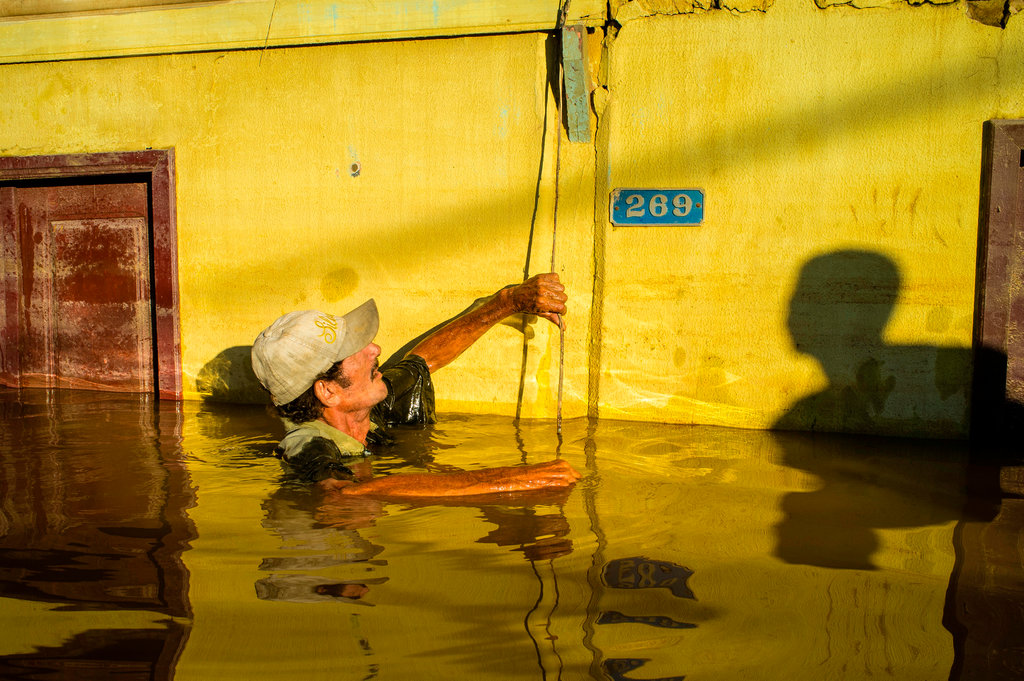
June and July 2022 – climate anomalies, heat waves, and extreme weather events
In the summer of 2022, the planet Earth experienced its sixth warmest June, sixth warmest July, and year to date on record since the global records began in 1880
2022: the sixth warmest June, July, and year to date
According to data from the U.S. National Oceanic and Atmospheric Administration (NOAA)’s monthly global climate reports, the year’s general hot trend has persisted during the first two months of summer 2022. In fact, in 2022, the planet Earth has experienced its sixth warmest June, July, and year to date on record since global records began in 1880.
«We use a global dataset called NOAA Global Temperature version five. This combines two datasets: one that’s over the ocean and one that’s over the land. The extended reconstructed sea surface temperature known as ERSST is our ocean-based temperature record. It contains ocean surface temperature data from several sources, including Argo floats, surface directors, buoys, and ships positioned and sailing across the world. The land surface air temperature dataset uses data from the Global Historical Climatology Network, which is a monthly database, a large set of monthly mean surface air temperature data gathered over global land areas. So this NOAA record has a start date of January 1880 and stretches to the present day». Explained Ellen Bartow-Gillies, physical Scientist at NOAA National Centers for Environmental Information (NCEI).
In June 2022, the global land and ocean-surface temperature surpassed the 20th-century average of fifteen-point-five degrees Celsius by 0.87 degrees Celsius. The average global land and ocean surface temperature in July 2022 was 0.87 degrees Celsius above last century’s average of 15.8 degrees Celsius.
What has the period between January and July 2022 been characterized by?
In parts of the Atlantic, Indian, and Northern and Western Pacific oceans, much of central South America, Southern North America, Asia, Europe, and Oceania, warmer-than-average conditions characterized the time between January and July 2022.
On the flip side, across parts of Northern North America, north-central Africa, the Northern Atlantic Ocean, the South-eastern Pacific Ocean, and the central and Eastern Tropical Pacific, near- to cooler-than-average conditions were recorded.
With a global temperature of 0.85 degrees Celsius above the last century’s average of 13.5 degrees Celsius, the first half of 2022 was the sixth warmest on Earth on record.
2022 – among the ten warmest years on record
According to data from the National Centers for Environmental Information (NCEI), which maintains a comprehensive archive of oceanic, atmospheric, and geophysical data, the year 2022 is very likely to be among the ten warmest years on record. This year has an eleven percent chance of being among the five warmest ones on record.
«Our January to July global surface temperature was 0 degrees Celsius above average, making it the sixth highest January to July temperature in that 143-year record. Regionally, Asia had its second warmest January till July period on record behind 2020, while Europe, the Caribbean islands, and Oceania had a January to July temperature that ranked among the nine warmest such periods on record. Africa, South America, and North America had an above average January to July period temperature, but it did not rank among their top ten warmest on record».
How were June and July 2022 compared to the previous ones?
All ten-warmest Junes on record have been recorded since 2010. June 2022 was the 450th consecutive month and forty-sixth June with temperatures, at least nominally, above the last century’s average.
All five warmest Julys on record have occurred in the last seven years. July 2022 was the 451st consecutive month and the forty-sixth consecutive July with temperatures, at least nominally, above the previous century average.
What were the prominent climate anomalies and events of June 2022?
South America had its coldest June since 2016, with much of the continent experiencing near- to cooler-than-average June temperatures. The city of Monterrey, the capital of the North-eastern Mexican state of Nuevo León, was impacted by a weeks-long water shortage caused by persistent drought and high rates of surface water evaporation.
Africa had its tenth-warmest June on record, tied with 1999, and New Zealand had its eighth-warmest June on record. Both Asia and Europe had their second-hottest June on record. A heat wave hit Japan in the middle of its rainy season (tsuyu 梅雨), with June 2022 marking the worst documented streak of hot weather in June since 1875. The city of Tromsø in Northern Norway experienced a new record June temperature, surpassing the one set in 1974.
Thousands of people had to evacuate parts of Southern China due to severe flooding, with some locations facing the heaviest downpours in sixty years. Melting snowpack resulted in heavy rain, causing flooding in parts of Southern Montana on June 13, and forcing the evacuation and temporary closure of Yellowstone National Park and nearby towns.
What were the main climate anomalies and events of July 2022?
In 2022, North America experienced its second-warmest July on record, with most of the contiguous U.S. having warmer-than-average to record-warm temperatures in said month. This made July 2022 the third-warmest July in the lower forty-eight U.S. states.
South America’s fourth-warmest July on record was July 2022. In the South-American nation of Paraguay, the temperature reached 39.1 degrees Celsius a new July temperature maximum at the Vallemi Airport in the Concepción Department in the middle of a winter heat wave.
Across much of Western Europe, July 2022 was a month of record-warm temperatures, with the continent being hit with its sixth warmest July on record. The West-European state of Spain had its warmest July in 2022. In addition, the same month was the warmest month on record for the Iberian nation since 1961. The continent of Asia had its third-warmest July on record, while the city of Hong Kong in East Asia had its warmest month.
In 2022, Africa had its 13th warmest July, tied with 2016. Heat waves and fires have characterized the season in Tunisia. In the North-African nation’s capital city of Tunis, the temperature reached 48 degrees Celsius on July 13, breaking a forty-year record.
Oceania had its coldest July since 2012 and recorded an all-time cold temperature record of -6 degrees Celsius in Hillston Airport in Western New South Wales, Australia.
«In the Northern hemisphere, July 2022 tied 2019’s record as the third warmest July on record. Whereas in the Southern hemisphere it was the eighth warmest on record». Said Bartow-Gillies.
[envira-gallery id=”109046″]
What was the state of the Antarctic and Arctic sea ice during June and July 2022?
In 2022, the Arctic had its tenth-smallest June sea ice extent averaging four-point-nineteen million square miles, 347,000 square miles below the 1981-2010 average. On the other side of the globe in Antarctica, the Sea ice extent in Antarctica hit a record low in June 2022, with its size at about 471,000 square miles below average.
In July 2022, the Arctic sea ice extent was the twelfth-smallest July sea ice extent on record averaging at three-point-nine million square miles, twelve-point-nine percent below its 1981-2010 average. In the same month, the Antarctic sea ice extent was a record low at 6.6 percent below average at 5.75 million square miles.
«According to one of our partners, the National Snow and Ice Data Center known as NSIDC, the Waddell and Bellingshausen seas and the East Antarctic coast experienced low sea ice extent for the month of July. Recent low ice extent in that region is attributable to large-scale circulation patterns, including the Amundsen Sea Low, which typically pushes warm air from the northwest to the North into the Waddell sea, making that area warmer than usual».
How diffused were drought conditions?
In June 2022, drier than average conditions were present across Europe, with the European Combined Drought Indicator showing drought across many areas of the continent. This trend continued in July 2022, with the European Combined Drought Indicator showing droughts in several regions of Northern, Western, Southern, and Eastern Europe.
«Satellite observations of vegetative health showed stressed vegetation across Western and Southern parts of the continent. In France, the unprecedented drought has caused serious damage to agriculture and prompted ninety-three of the nation’s ninety-six Metropolitan Departments to go on alert and have water restrictions across much of the country. The heat and drought have put Spain’s crops in jeopardy. In Italy, at least a third of the country’s agricultural production was at risk. A state of emergency was declared in several northern regions where the Po River had dried up».
Across a large portion of Asia, June was wetter than usual, while in some Northern and Southern regions, much warmer-than-normal temperatures increased evapotranspiration and magnified drought conditions.
Droughts across the world
Southern and some Northern portions of Africa were wetter than usual during June, but central Africa and other Northern areas were drier than average. The uncommon warm conditions presenting themselves across much of the African continent raised evapotranspiration, affecting the dry areas. In July, Eastern, Northern, and Southern parts of Africa were drier than usual.
In June, Northern areas of Australia were wetter than usual. Southern areas were dry, with dry soils and stressed vegetation being detected in the southwest. North and Eastern parts of Australia experienced wetter-than-normal conditions in July, while Western and South-eastern areas saw drier than average conditions.
Drier than normal conditions were present in the Southern half of South America in June 2022. The opposite occurred in parts of Brazil and Northwest coastal areas where it was wetter than usual. In June, temperatures were warmer than average in much of the Northern half of South America. In July 2022, almost the whole continent had warmer than normal temperatures, and its central areas were drier than usual.
Ellen Bartow-Gillies
A Physical Scientist at NOAA National Centers for Environmental Information (NCEI) with a Master of Science in Geological and Earth Sciences/Geosciences from Texas A&M University.







